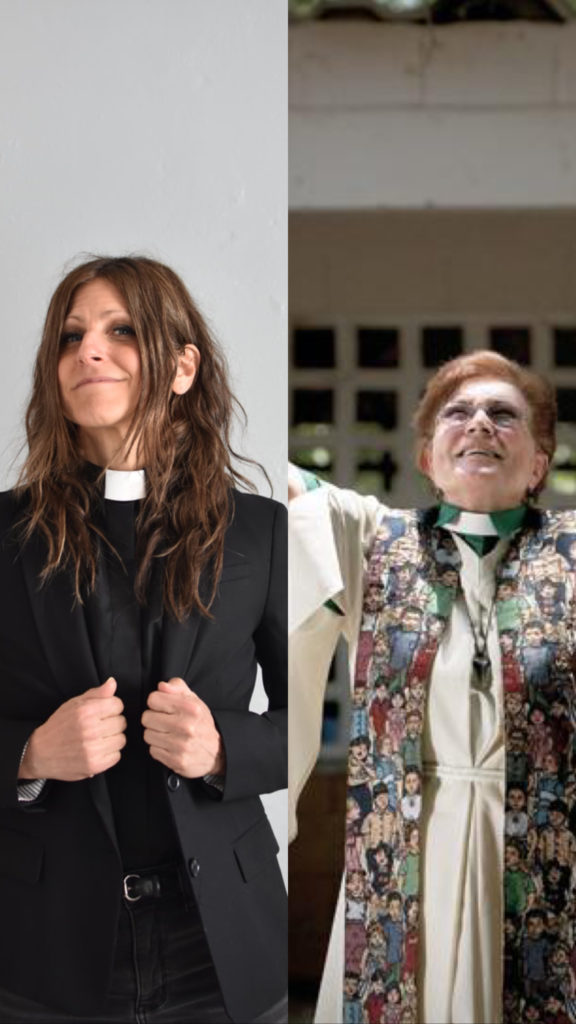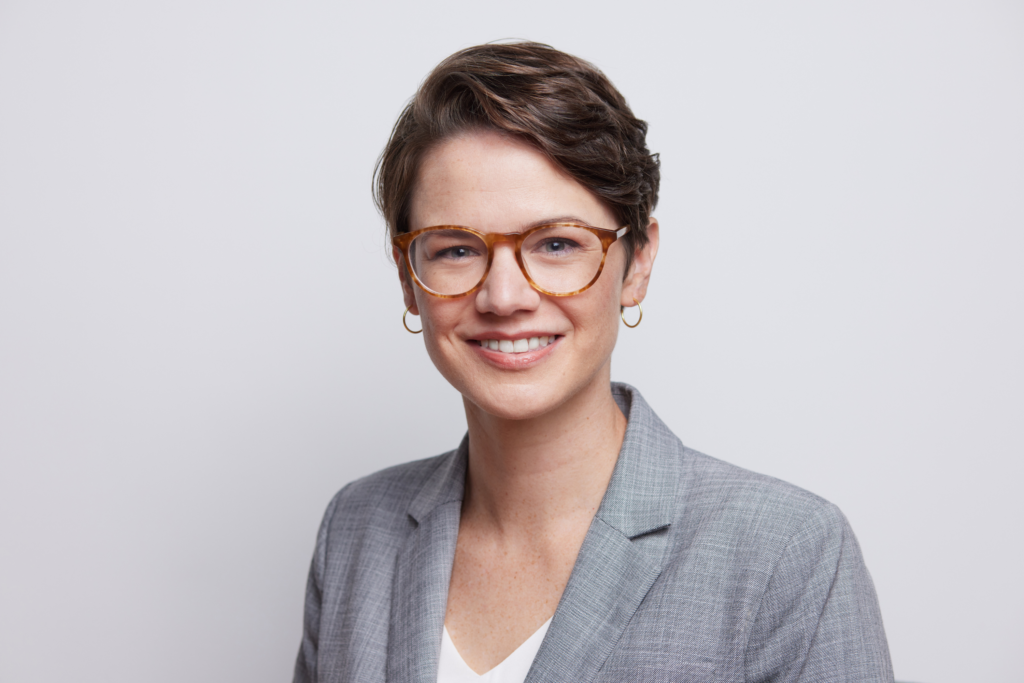Multi-Media Excisions—and Surprising Inclusions
It seems almost surgical, the excision of women’s ordination from the conversation.
This week, when I watched the BBC documentary “The Women Fighting to be Priests” on YouTube, I was thrilled with the stories of two Roman Catholic Women Priests, Fr. Anne and Olga Lucia Alvarez. Then Kate McElwee of WOC calmly presents the Vatican situation, including the appointment of Sr. Nathalie Becquart to her Synod position. Sr. Becquart is marvelously articulate, but notes that change is difficult. She acknowledges that the “official position” of no women’s ordination was set by John Paul II and has been continued by Francis, so “it’s not an open question.” It’s the only moment she folds her arms; otherwise, her gestures, like her words, are wide open. Both RCWP priests conclude by noting the widespread support, including in the Synod process, for women in the priesthood.

“A Flock without Shepherds?” is the first Commonweal podcast to intrigue me in a while. Regular contributor Massimo Faggioli joins editor Dominic Preziosi to discuss the USCCB leadership as well as Catholics in politics and journalism, Vatican II, and the fallout from the abuse crisis, which is his segue to the Synodal way in Germany. Some Cardinals more than the Pope are scared because “with the support of theologians, a majority within the episcopate approved substantive changes in access of women to ministry,” and, less publicly, Belgian bishops said exactly the same thing. Faggioli says it’s not clear what will happen, except that some “proposals will be stopped by the Vatican, on women ordination for sure, because the clear magisterial obstacles are very difficult to overcome,” but not on women in the diaconate. He “expects something to happen” because “Rome is not so foolish to say ‘you discussed but nothing will come out of it.’” The podcast concludes with Natalia Imperatori- Lee’s analysis of the self-portrait by Yolanda López as a dynamic Guadalupe, part of a triptych including her mother and grandmother. The scholar and the subject both claim “the sacredness of everyday.” Impertori-Lee says Lopez represents the “dones,” people who have left the church but continue to use religious imagery, using the “residue of grace,” and she moves my thinking into the realm of art and creativity.
“The Catholic Church needs more women interpreting the Bible” is the Gloria Purvis podcast in America this week. Jaime Waters talks about her career as a scripture scholar and her three years writing the commentaries for the Sunday readings for the magazine. She did not avoid the controversies of these turbulent years. Purvis was part of the America interview of Pope Francis and Waters says the interviewers “went there:” they brought up the right issues. They agree that it’s important for women to interpret the scriptures and that their absence from preaching at mass is a real loss. At least they didn’t say “women would never,” and Purvis noted that a few women are doctors of the church; that their insights are respected paves the way for other women. Waters’ current project is a “feminist critique” of Jerimiah, and she and Purvis discuss the O! Antiphons, images I have always loved.
Now I turn to print media. Purvis’ openness to women preaching is surprising because she was recruited by America after from EWTN, the far-right Catholic TV network. An even more surprising inclusion was on the front page of the Vatican newspaper, L’Osservatore Romano. Cindy Wooden reports for CNS in NCR that Marinella Perroni, a retired professor of biblical theology at the Pontifical Atheneum of St. Anselm in Rome, wrote that “The question must be asked: ‘Doesn’t the Marian-Petrine principle express an ideology and rhetoric of sexual and gender differentiation that has now been exposed as one of the covers for patriarchal privileges?’” The article does quote Pope Francis in the America interview, but then Perroni examines the development of this theology in papal teaching since Paul VI. She characterizes this binary as “seductive” because it is simple. Wooden goes on:
But it is problematic because it stereotypes the differences between men and women and gives them a hierarchical value, she said. The feminine is presented as domestic, interior, welcoming and spiritual, while the masculine is presented as ministerial, authoritative and powerful.
However, Perroni wrote, it is “quite clear that forms of the mystical exaltation of the feminine are directly proportional to the refusal of public recognition of women’s authority.”
“The masculine-feminine bipolarity,” she said, featured “obsessively” in Catholic theology when it was “totally androcentric and patriarchal,” but it has lost credibility “since women first became the ‘women’s issue’ and then, having shaken off this offensive expression, became full protagonists in social, political and ecclesial life.”
Women who want women priests are certainly more than an “issue” and the obsession with gendered differences indeed masks the grasping of authority away from women on every level in the church. As Fr. Anne says at the end of the BBC interview, Pope Francis should talk with the women who want to be ordained. He would see people. Bravo, Professor Perroni, for getting it on the front page.
Less surprising is long-time advocate for women deacons, Phyllis Zagano, who has to be happy with the current environment. She summarizes: “The national synod reports sent to the Vatican from bishops’ conferences around the globe presented the desire for women to be present in church governance, certified as preachers and in the diaconate.” She’s not wrong; that consensus is certainly there. She concludes her article for Religion News Service with a clear summary of the arguments for women deacons, and concludes:
But the church is dangerously close to losing even more members when it states — or seems to state — that women cannot image Christ — that is, that women are not made in the image and likeness of God. Finally professor Susan Bigelow Reynolds in Commonweal puts even more flesh on the bones described by both these authors.
Yet there is little in Church teaching on women that does not appear to proceed from a fundamental illusion that women—the billions of us—constitute some sort of monolithic, quasi-theoretical body with an articulable essence, singular vocation, and narrow set of essentialized gifts.

Reynolds finds great hope for a new understanding of women in the Continental Stage document: “the status quo not only represents a problem for women but, fundamentally, for the mission of the Church.” She summarizes various “risky acts of honesty” in the examples from around the world, which are not only the concerns of the affluent West. The call of Vatican II for a “world church” meant that “the Church had to come to terms with how thoroughly its notions of sanctity and divinity had been conditioned by the normative status of European culture, aesthetics, language, music, art, and bodies.” Her concluding question:
What would it mean for women to be recognized as protagonists in the Church, as full subjects, diverse in every respect, with the agency to respond in freedom and creativity to the call of the Gospel?
Merry Christmas and Happy New Year! Let us look forward to taking the next steps on this great journey.
